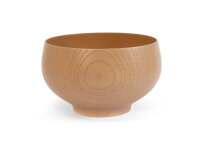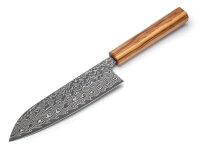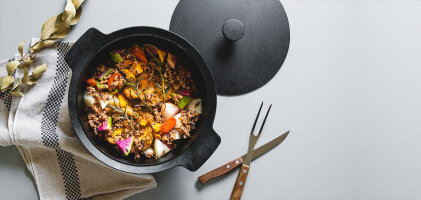Our Theme worlds
Our Philosophy

Oryoki
The brand Oryoki aims to provide sustainable joy. In literal translation, Oryoki means "that which contains just enough".
Thus, it not only symbolizes a Japanese design philosophy of reducing to the essentials, which you will often recognize in our product range. It also concerns the selection of products itself. In times of diversity, excess and complexity emerge, and many long for reduction and quality during this time. These values should be upheld in the Japan shop Oryoki.

Selected Products
With the help of centuries-old skills and the selection of the highest quality materials, extraordinary designers in Japan create products of exceptional quality.
We focus our attention on this craftsmanship and hope to inspire you with it. The products at Oryoki are carefully chosen, and we look forward to introducing you to the stories and people behind these products.

Awareness and Attention
The high craftsmanship flows into the products and is immortalized in the result itself. However, perfection only arises when it receives recognition from the owner.
This respect can only emerge when we succeed in telling and depicting the stories and people behind the creation. We would like to dedicate ourselves to this endeavor to enable you to appreciate this value.

The Power of Nature
We hold deep respect for nature and natural materials. The designers of the selected manufacturers we work with share this appreciation and incorporate it directly into their products. This creates something truly special.
Anyone who has the privilege of holding these outstanding results of their work can feel and sense this reverence.
WAS UNSERE KUNDEN SAGEN
In selecting our products, naturalness and sustainability are of utmost priority. The predominantly natural material is enhanced, painted, sealed, and protected with natural substances. Many products will bring joy to their users for a lifetime. And thus, also to us, as there is no better protection for our environment than beautiful, useful products with a long life expectancy and high utility value.
VG-10 steel, a special stainless steel from Japan for Japanese kitchen knives, often forms the cutting core. It is enveloped by multiple layers of Damascus steel, crowned with a beautiful finish. Also gaining popularity are Japanese knives Kuroshiage or Nashiji, two visual delights with their own unique character. These knives are mostly made with the famous and hard Aogami steel or Shirogami. Blue and White Paper Steel from Japan. In the West, almost everyone knows the Santoku knife, an all-purpose knife with a blade around 17 cm. The Gyuto knife resembles the European chef's knife. It is also called a chef's knife. Some special shapes include the Nakiri knife, a specialist for vegetables, the Bunka knife, an all-round knife developed for fishermen with a very versatile character, and of course, the Sashimi knife, known by sushi masters. Surprisingly, few chefs in Europe are familiar with the peeling and office knife Petty, although it is the knife that is most often used in the kitchen.
Our cast iron pans and cast iron pots at ORYOKI have been handcrafted using this over 400-year-old method. From rust protection to finishing, natural materials such as Urushi lacquer and green tea are utilized. The results are beautiful, sustainable, relatively light, and have a gorgeous surface. For cooks, the enjoyment begins with cooking itself, and the cooking results delight with wonderful roasted flavors, whether it's vegetables, potatoes, meat, or fish.
However, the art of preparation begins even earlier - with heating the water. Traditionally, and even today, water for tea is heated and prepared in a Tetsubin cast iron water kettle. Because with this water, green tea tastes even better. For pouring green tea, Japanese teapots called Kyusu are used. Small teapots, as all the tea is completely distributed into the tea bowls after the correct time. Magnificent porcelain, Japan's white gold, healthy clay from Tokoname, or cast iron are the materials that, according to firm belief of tea connoisseurs, transform tea into what counts among the highest pleasures in Japan.
Naturally, the Sencha is represented, a classic that is stimulating. Noble Gyokuro, an aromatic specialty with a soft, dark green leaf, and a valuable Kukicha with low caffeine, made from Sencha and Gyokuro. Exceptional are the Genmaicha - these teas contain rice, which creates a very special, unique aroma.
Dumplings are filled dumplings that are very popular in Asian cuisine. They are also known as jiaozi and originate from China, but are now also ...
Bread is a staple food that has been consumed around the world for thousands of years. There are many different types of bread made in different ...
Fruit tea punch made from Hojicha tea is a delicious combination of sweet, bitter and refreshing flavors. This drink is particularly suitable for ...
A tarte tatin is a French dessert traditionally made from apples and puff pastry or shortcrust pastry. The apples are caramelized in sugar and ...
akionigiri rice balls are served in Japan as a snack or as a side dish with soups and stews. The crispy texture of the grilled rice balls and the ...
The origin of cinnamon buns is not fully known, but it is assumed that they originated in Sweden. They have been baked there since the beginning ...
Pan pizza is a type of pizza that, unlike traditional Italian pizza, is known for its thick, crispy crust. It is baked in a deep baking dish or ...
On cold winter days, there is hardly anything better than warming up from the inside out. A hot stew is not only delicious, but also a healthy, ...
The traditional recipe for this Japanese dish takes two days to prepare. For busy people, this dish is not necessarily suitable for everyday use - ...















































-from-the-yakiyaki-grill-pan.jpg)





